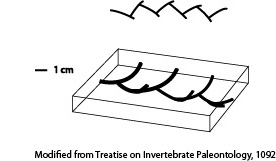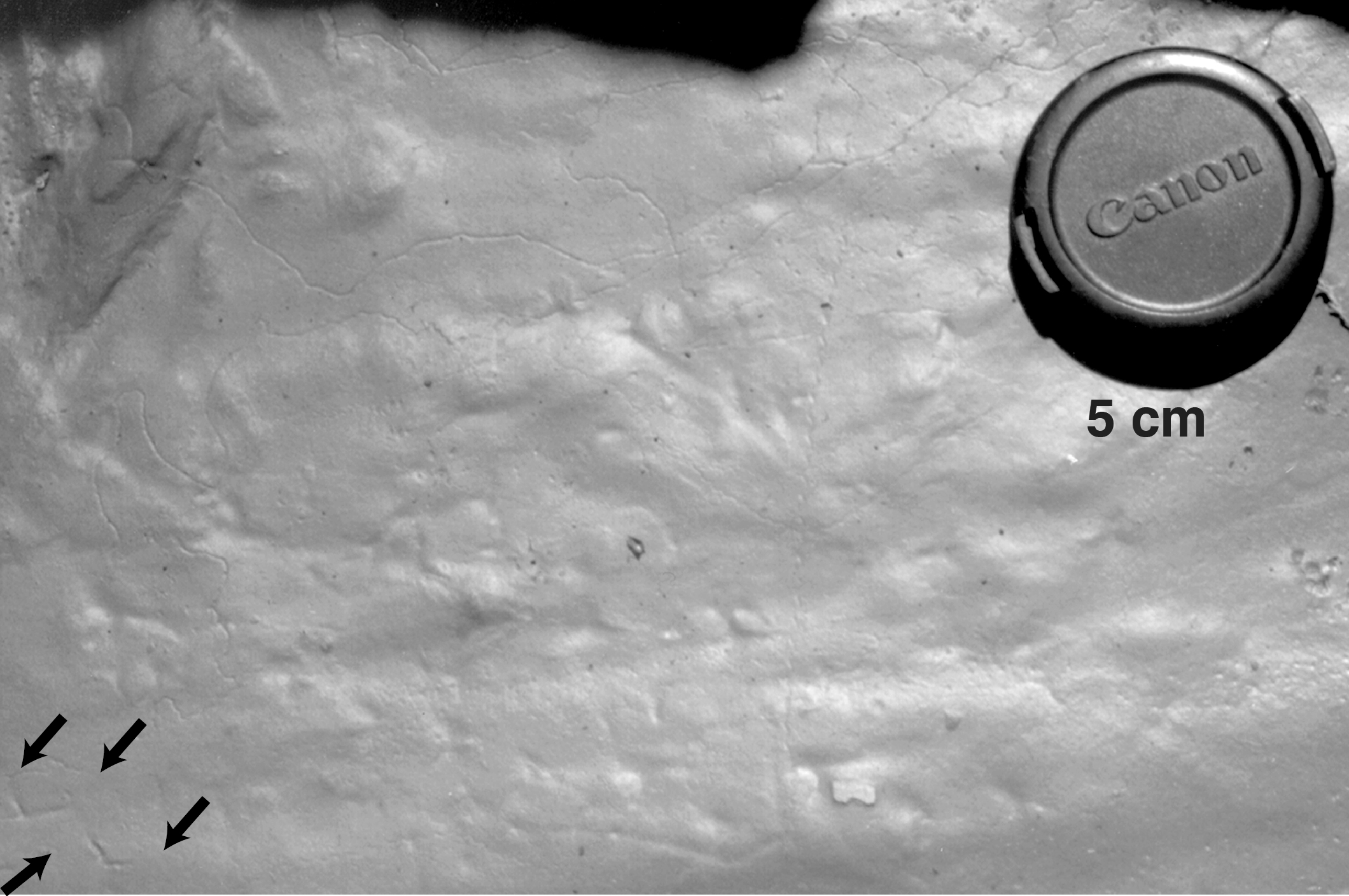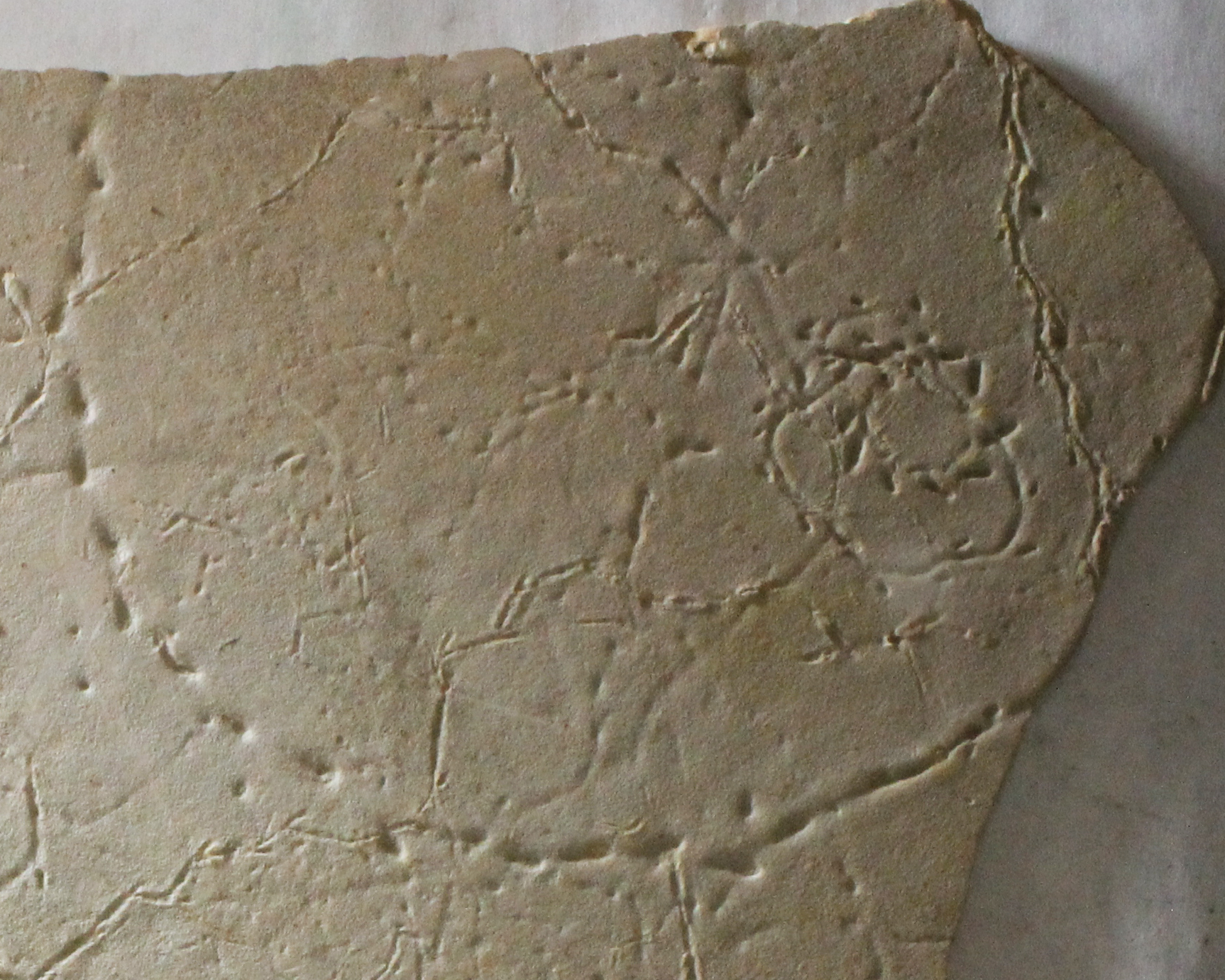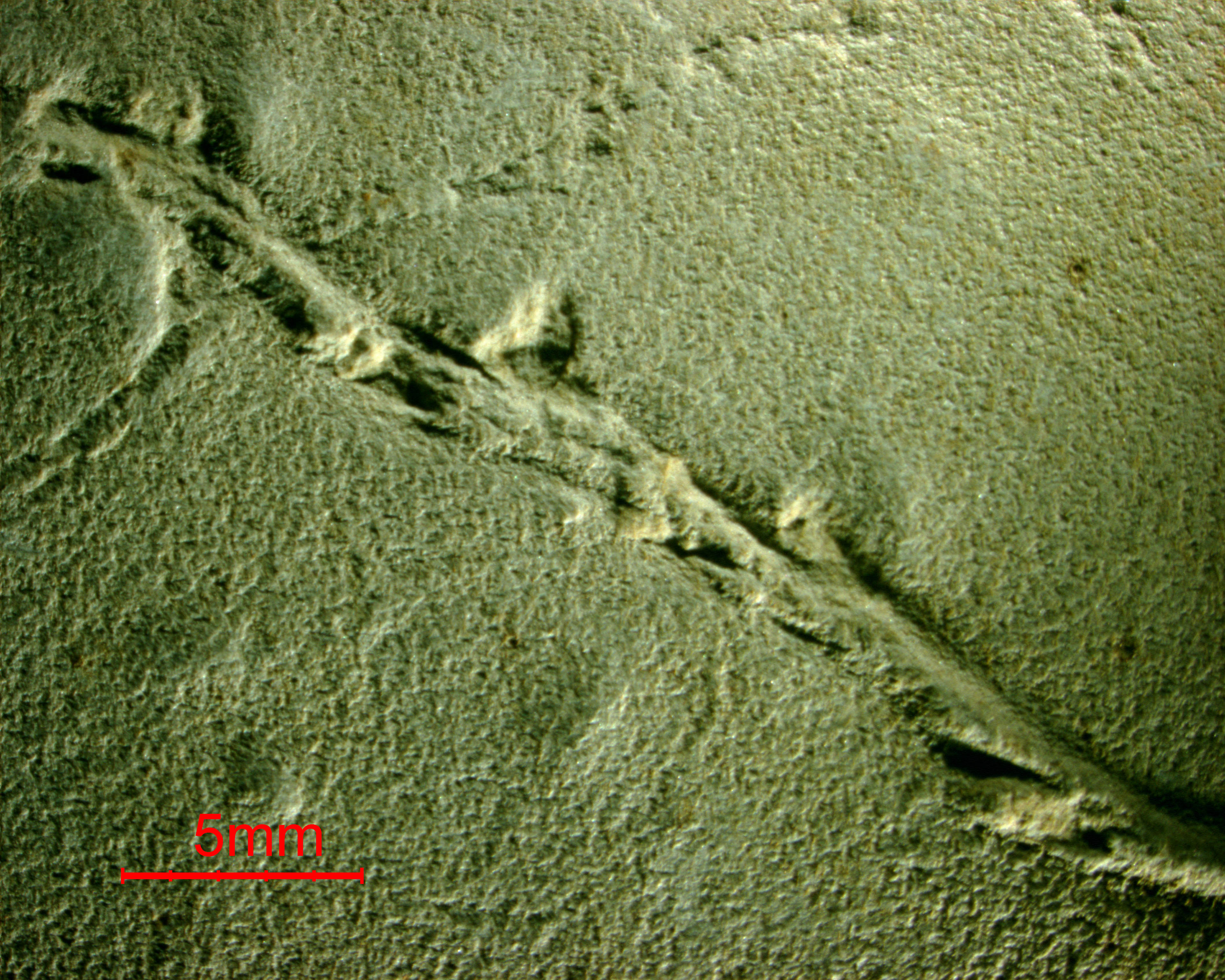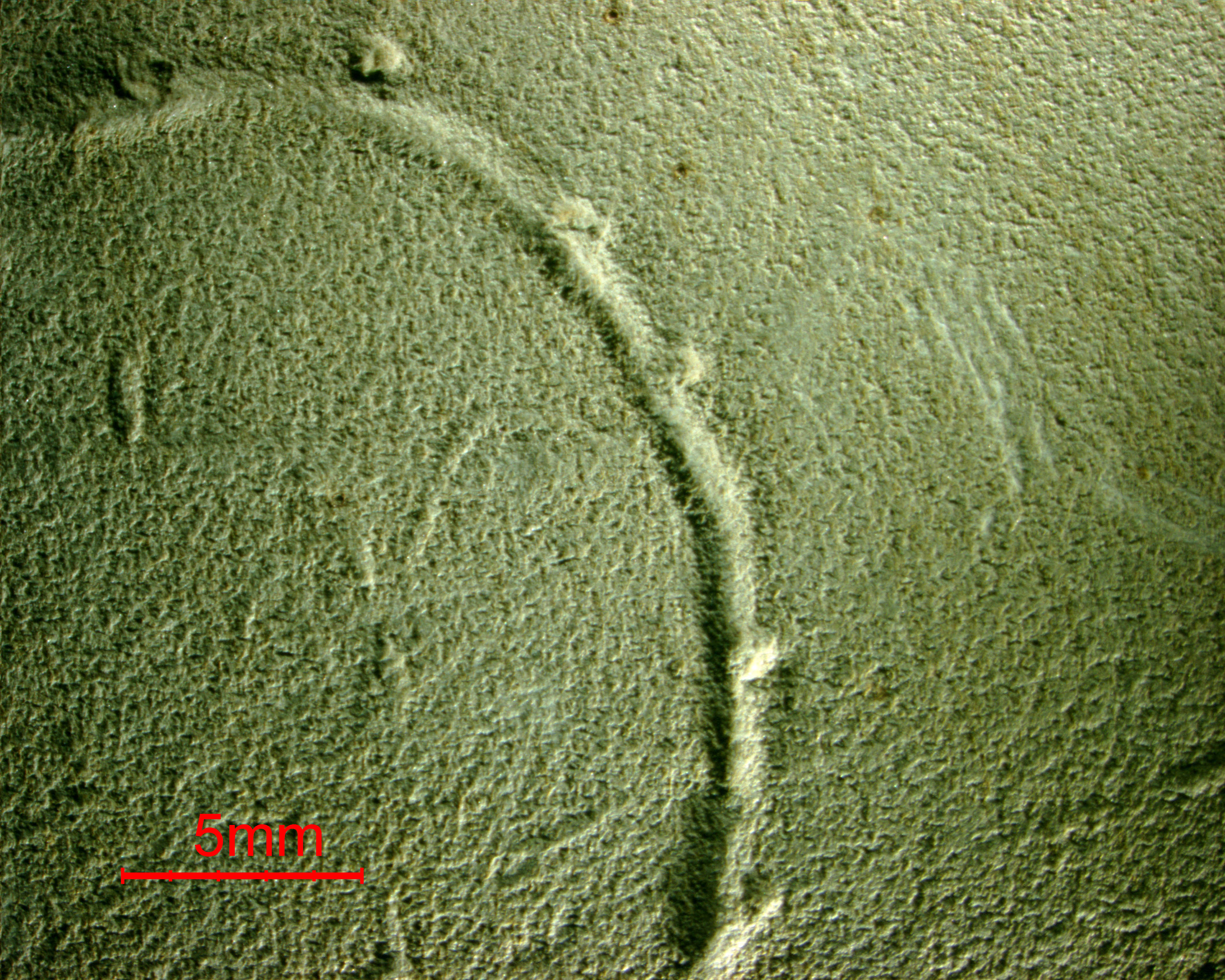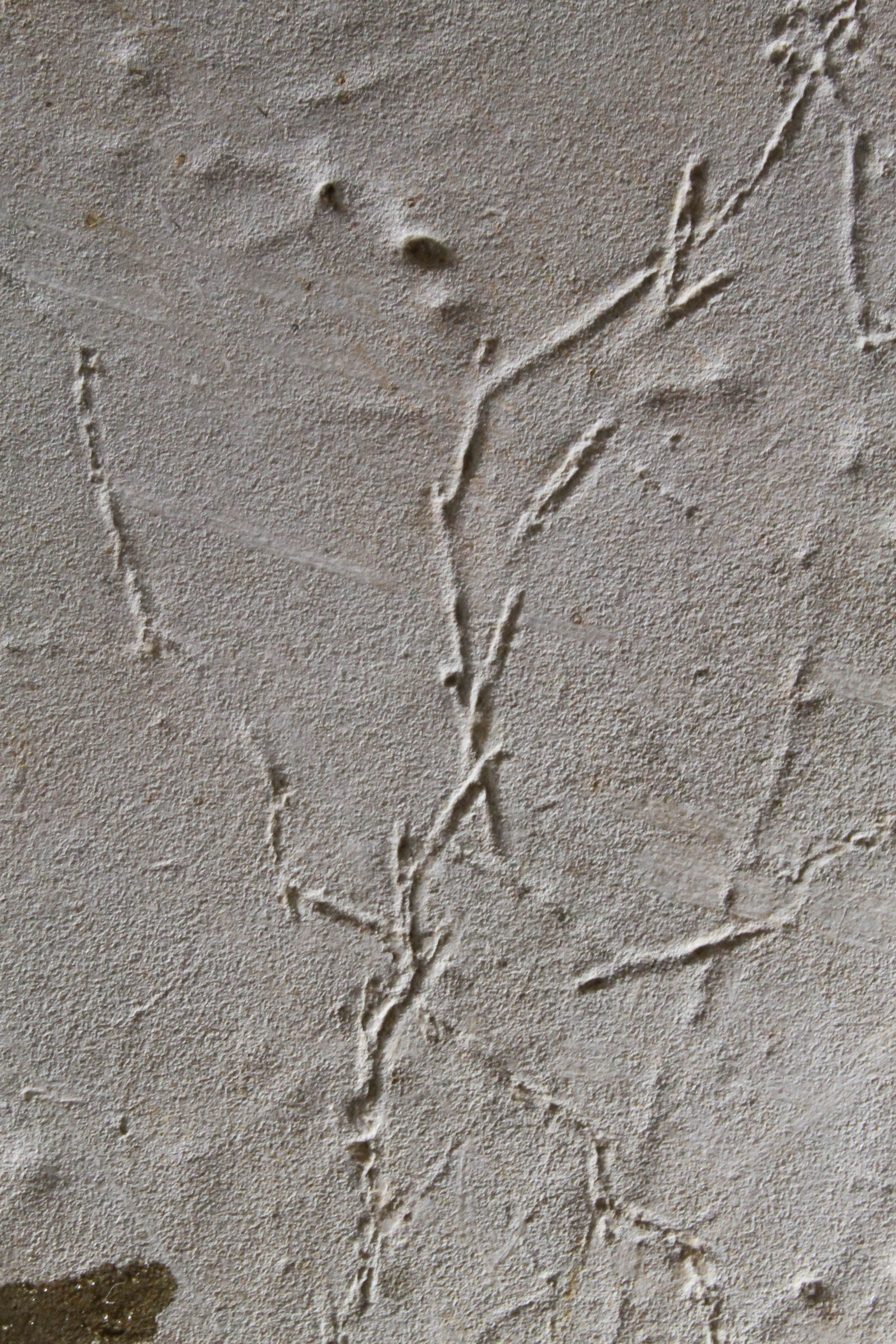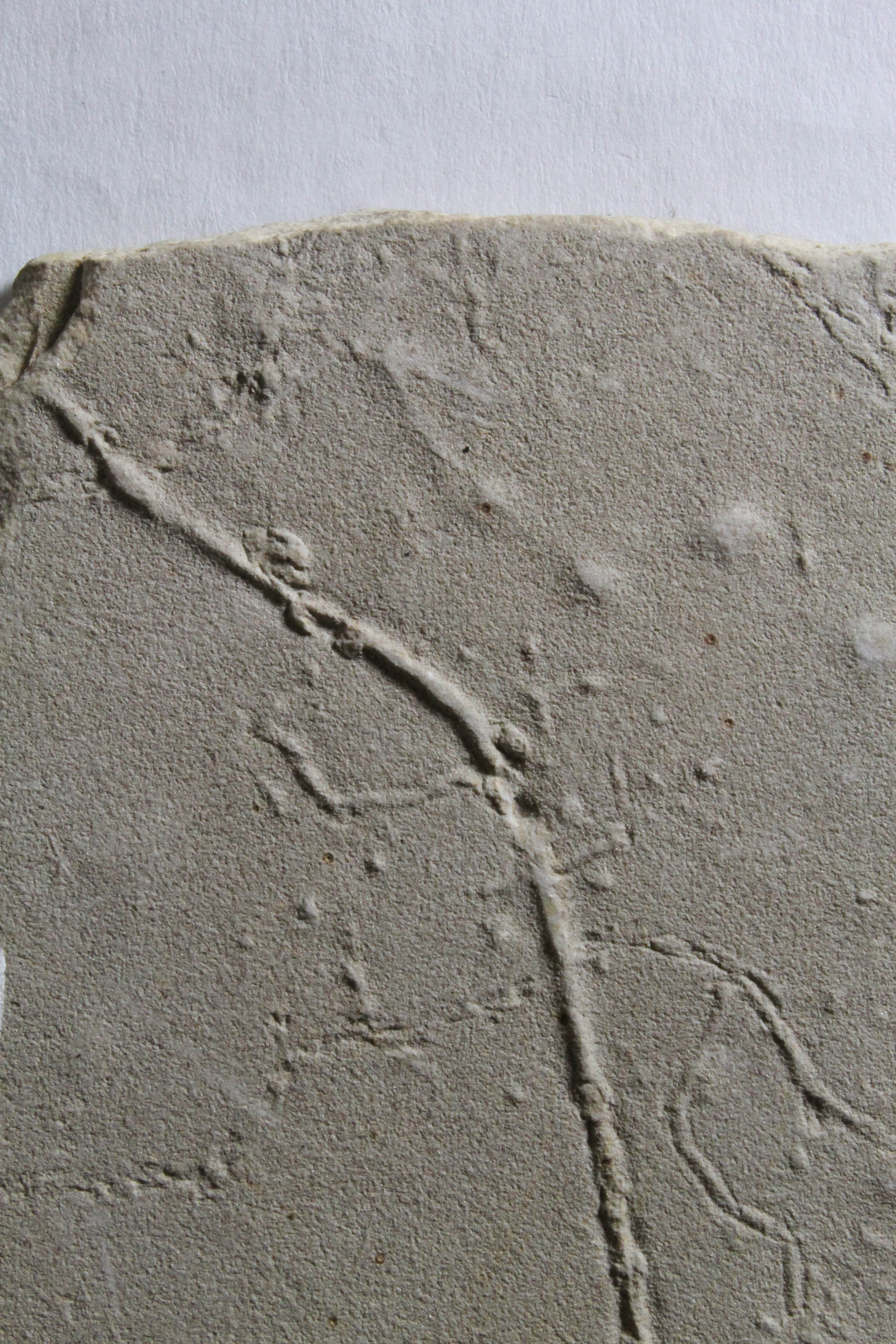Treptichnus Miller, 1889
DESCRIPTION: Shallow, U-shaped segments connected in a zigzag, or irregular, or other pattern near their ends, laminae on the floors of burrows, and, where well preserved, having longitudinal striae on at least the lower surface of the burrow segmnet, or in some cases on the sediment beyond the apertures.
Original diagnosis: A zigzag, half-cylindrical, continuous trail, forked at each angle, and running in any direction; each line is prolonged in the direction in which the animal moved, at the angle, so as to form a short fork or projection.
Emended diagnosis: Subhorizontal burrow consisting of one series of downbowed or J- to U-shaped segments joined near or at their ends in a uniserial pattern that may be irregular, zigzag, or arcuate. Segments extending to sediment-water interface with at least one aperture originally open; very gently downbowed or nearly straight, fill passive, commonly by collapse.
BEHAVIOR(S): Fodinichnia (deposit feeding), Calichnia (pupation trace), Domichnia (domichnia), Praedichnia? (predation), Agrichnia? (agriculture); Feeding burrow of a deposit-feeding organism.
ENVIRONMENTAL SETTINGS: Found in shallow- to deep-marine settings and continental terrestrial, water-margin, and other settings where there is present the sediment-water-air interface.
POSSIBLE TRACEMAKERS: Worms, vermiform organisms, arthropods, and dipteran pupa or larva
GEOLOGIC RANGE: Precambrian-recent.
ADDITIONAL REFERENCES: Hantzschel, 1975, Uchman, et al., 1998, Knaust, 2004, Wilson et al., 2012, Munoz et al. 2012, Getty et al. 2016
REMARKS: Possible predation or scavenging trace (Vannier et al., 2010), or agricultural trace (Knaust, 2004). Jensen (1997) and other researchers expanded the concept of Treptichnus to include Phycodes pedum, the Lower Cambrian trace fossil that Seilacher (1955) named. Because “Treptichnus” pedum is now used to define the Precambrian-Cambrian boundary (Brasier et al., 1994), its taxonomy, paleoecology, and stratigraphy are matters of interest. Recently Treptichnus has been found below the Ediacaran-Cambrian boundary.
